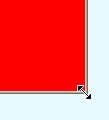PowerBuilder – Resizing a Response Window or User Object
Here is a technique you can use to resize a response window or userobject as needed. It makes use of the GetWindowLong and SetWindowLong Windows API methods. The oldest reference I found to this is from Eric Aling back in 2000. In a nutshell, you are changing the border around the object to one which Windows allows to be resized. What’s even nicer about this is the standard resize events are triggered so you can reposition/change objects within the window as well (PFC resize service for example). From Eric’s original post:
"The Get function retrieves the complete defenition of the window in a big long variable. All the bits in this long value describe the window. So there are bits for the type of border (which indicates if a window is resizable), menu, colors etc.etc. We can modify this long value, altering the design of the window. Using the SetWindowLong() we update the window with our specific modifications."
I used this in ancestor code of a userobject I use to create visible panels within the main window.
// Unicode declarations, used 'A' for ANSI function long GetWindowLongW (long hWindow, integer nIndex) Library "user32.dll" function long SetWindowLongW (long hWindow, integer nIndex, long dwNewLong) library "user32.dll" // code in my post constructor event n_cst_numerical lnv_num // PFC numeric service long ll_Styles boolean lb_Control constant long WS_THICKFRAME = 262144 constant long WS_SYSMENU = 524288 ll_styles = GetWindowLongw(handle(THIS), -16) if ll_styles <> 0 then ll_styles = lnv_num.of_BitWiseOr(ll_styles, WS_THICKFRAME) // don't need control menu but leave this for reference // if ab_Control then // ll_styles = lnv_num.of_BitWiseOr(ll_styles, WS_SYSMENU) // end if SetWindowLongW(handle(THIS), -16, ll_styles) end if
At first my UO cannot be resized.
Now it can!
I’ve seen other references to these API calls for manipulating windows for other things but I have not investigated further.
You might also be interested in

